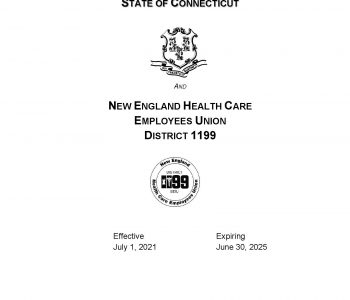 Connecticut
Connecticut

The CT Mirror covered another story regarding Gov. Lamont and Nursing Homes.
Gov. Ned Lamont’s administration offered nine embattled nursing homes a reprieve Thursday from deep cuts in state funding: The Department of Social Services effectively suspended plans to reduce one-and-a-half months’ worth of funding to the nine homes with high vacancies.
The head of the state’s largest nursing home association said the action was appreciated, but the facilities will remain in financial crisis until and unless state officials change their strategy for reducing bed vacancies.
“We remain sensitive to the concerns of the nursing facilities, the residents, their families, the staff, and all interested stakeholders,” Department of Social Services Commissioner Deirdre S. Gifford wrote in a letter to the Connecticut Association of Health Care Facilities President Matthew V. Barrett.
At issue is new legislation in June authorizing DSS to reduce rates to nursing homes with bed vacancy rates exceeding 30 percent.
DSS ordered rate reductions for nine homes that would cost them a collective $5.3 million across this fiscal year and next combined. The nursing homes that stand to lose funds based on the vacancy standard are located in Bristol, Fairfield, Hamden, Shelton, Simsbury, South Windsor, Torrington, Wallingford, Waterbury and Wolcott.
The fiscal year began on July 1, but until mid-August the DSS paid the homes in accordance with the previous year’s higher rate until the new system could be implemented.
Starting with the regular September payment, which was delivered this week, the lower rate was imposed, costing the nine homes “several hundred thousand dollars,” Barrett said.

Department of Social Services Commissioner, Deirdre Gifford
In addition, the department had scheduled a Sept. 20 “mass adjustment.” This involved the state effectively recouping the extra funds it paid through the older, higher rate to the nine homes between July 1 and Aug. 15.
Gifford wrote this Sept. 20 “mass adjustment” won’t occur while the department considers appeals from the facilities. This typically can take many months.
But Barrett noted that unless the state changes its policy, the homes would continue to be paid at the lower rate for the rest of this fiscal year and for 2020-21.
Barrett called the administration’s offer “an important gesture.”
“But it is no way addresses the significant cut they face the rest of the fiscal year,” he said. “It doesn’t save them from potential fiscal calamity.”
Gifford’s decision does give the Lamont administration time to negotiate with legislators about how to proceed.
Lawmakers already are expected to return to the Capitol in special session later this fall to ratify a legal settlement with the state’s hospital industry and to adopt a bonding package and capital plan for this fiscal year and next.
Leaders also have discussed possible action on a restaurant wage issue and on a long-term transportation rebuilding program.
Members of the Republican minorities in the Senate and House have said the General Assembly should vote this fall to repeal the legislation authorizing the rate reduction. And key Democratic legislators also have said the administration implementation of this policy has not gone forward as they envisioned.
Sen. Cathy Osten, D-Sprague, co-chair of the Appropriations Committee, said her understanding was that rate reductions would not be imposed early in the fiscal year — and not before DSS analyzed the impacts of potential facility closures, including the potential loss of vital specialized services such as dialysis, hospice, and various chronic care programs.









